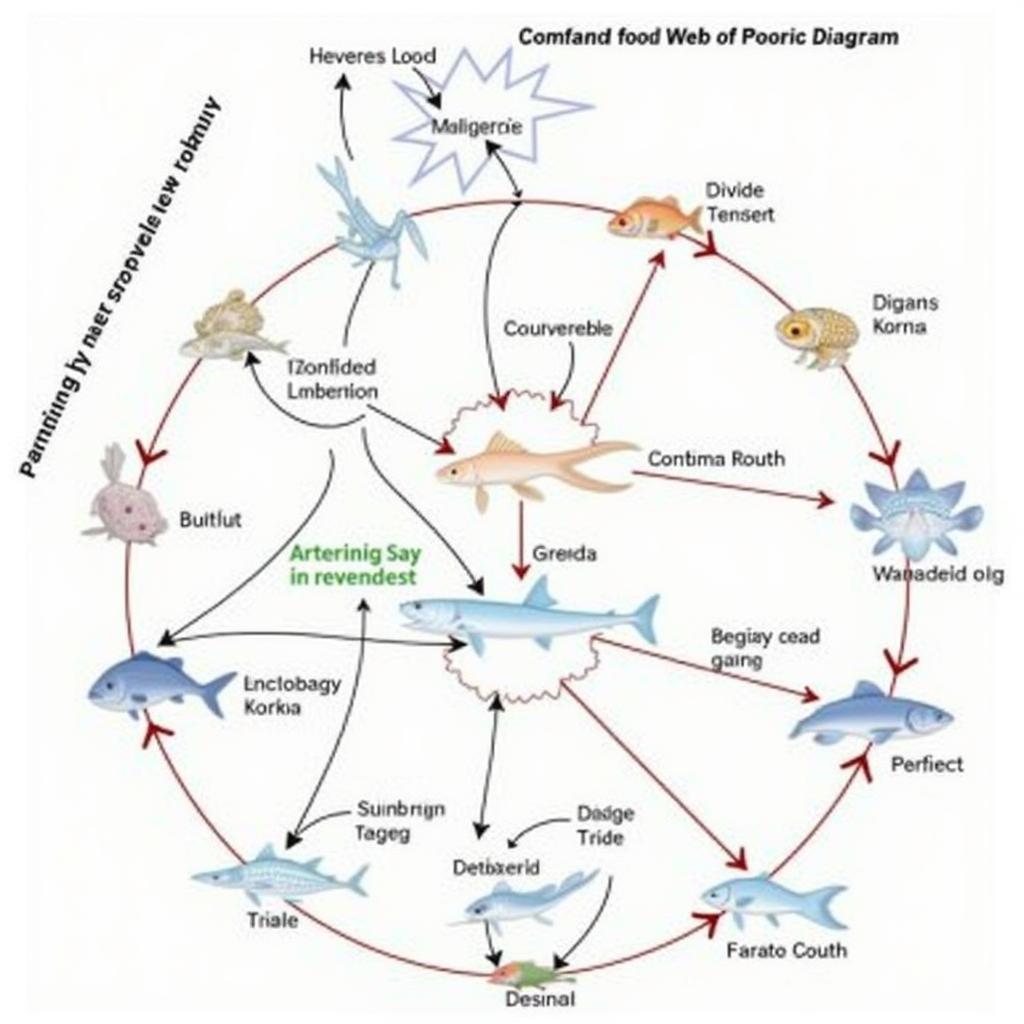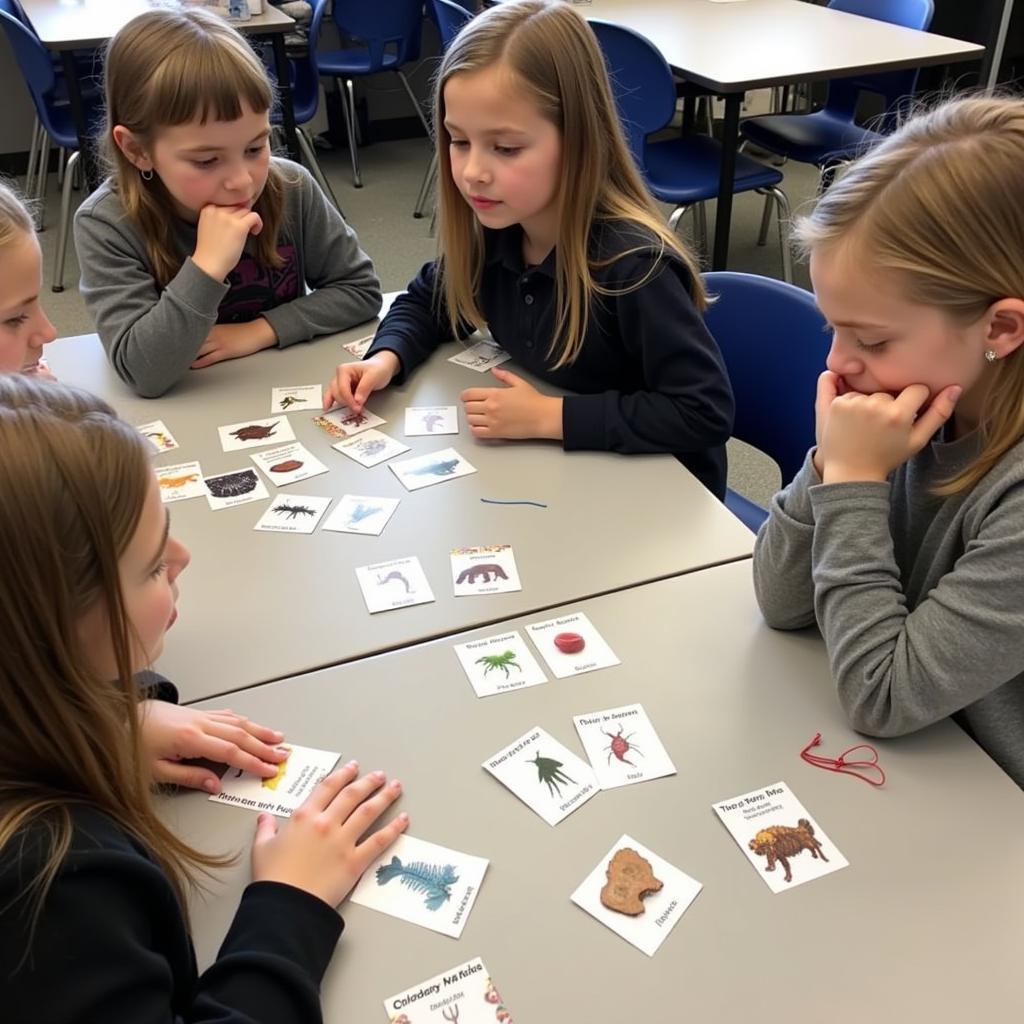Building a food web activity is a fantastic way to learn about the intricate relationships within an ecosystem. It allows us to visualize how energy flows from one organism to another, highlighting the delicate balance that sustains life on Earth. In this post, we’ll explore the importance of food webs, how to construct one, and the educational value of this engaging activity.
Understanding Food Webs: More Than Just Who Eats Who
Food webs represent the complex feeding relationships in an ecosystem. They differ from simple food chains, which only show a linear progression of energy transfer. Food webs, on the other hand, demonstrate the interconnectedness of various food chains, providing a more realistic picture of how organisms interact.  Example of a Complex Food Web Diagram
Example of a Complex Food Web Diagram
Why Build a Food Web Activity?
Building a food web activity is an invaluable educational tool. It helps us grasp the concept of energy transfer, trophic levels (producers, consumers, decomposers), and the interdependence of species. This activity also highlights the potential impact of changes in one part of the ecosystem on other parts.
How to Build a Food Web Activity: A Step-by-Step Guide
-
Choose Your Ecosystem: Select a specific ecosystem you want to explore, such as a forest, pond, or ocean.
-
Research the Organisms: Identify the various plants and animals that inhabit your chosen ecosystem. Research their diets and feeding habits.
-
Identify Producers: Determine the primary producers – organisms that make their own food through photosynthesis, like plants or algae.
-
Identify Consumers: Determine the primary, secondary, and tertiary consumers. Primary consumers eat producers, secondary consumers eat primary consumers, and so on.
-
Include Decomposers: Don’t forget the decomposers! These organisms, like fungi and bacteria, break down dead organic matter and return nutrients to the ecosystem. melody select bird food might be an interesting example to consider in a backyard ecosystem food web.
-
Connect the Organisms: Draw arrows to show the flow of energy between organisms. A single organism can be part of multiple food chains within the web.
-
Analyze Your Food Web: Once complete, analyze the relationships within the web. What happens if one species disappears? How does this impact the other organisms?
 Interactive Food Web Activity for Students
Interactive Food Web Activity for Students
The Educational Impact of Food Web Activities
Building a food web activity is more than just a fun classroom exercise. It fosters critical thinking, problem-solving, and analytical skills. It also encourages an appreciation for the interconnectedness of nature and the importance of conservation. build a food web activity answer key can be helpful in guiding this learning process.
Expert Insight: Dr. Emily Carter, Ecologist
“Food web activities are essential for understanding ecosystem dynamics. They vividly demonstrate the delicate balance of nature and the importance of biodiversity.”
How Food Webs Reflect Real-World Issues
Food webs can also be used to understand real-world environmental issues. For example, they can illustrate the impact of invasive species, habitat loss, or pollution on an ecosystem. Consider the impact of liquid plant food for cannabis on the surrounding environment. This could be a great topic for creating a food web focusing on a very specific aspect of an ecosystem.
Conclusion
Building a food web activity is a powerful tool for understanding ecological relationships. It’s an engaging and informative way to learn about the flow of energy and the interconnectedness of life within an ecosystem. By constructing and analyzing food webs, we can gain a deeper appreciation for the delicate balance of nature and the importance of protecting our planet. Consider ozarks food harvest jobs to gain further insight on how real world food harvesting happens. field trial dog food review
FAQ
- What is the difference between a food chain and a food web?
- What are trophic levels?
- What is the role of decomposers in a food web?
- How can I make a food web activity more interactive?
- Where can I find resources for building a food web activity?
- How do food webs relate to real-world environmental issues?
- What is the importance of biodiversity in a food web?
Need support? Contact us 24/7 at Phone Number: 02437655121, Email: minacones@gmail.com Or visit us at: 3PGH+8R9, ĐT70A, thôn Trung, Bắc Từ Liêm, Hà Nội, Việt Nam.